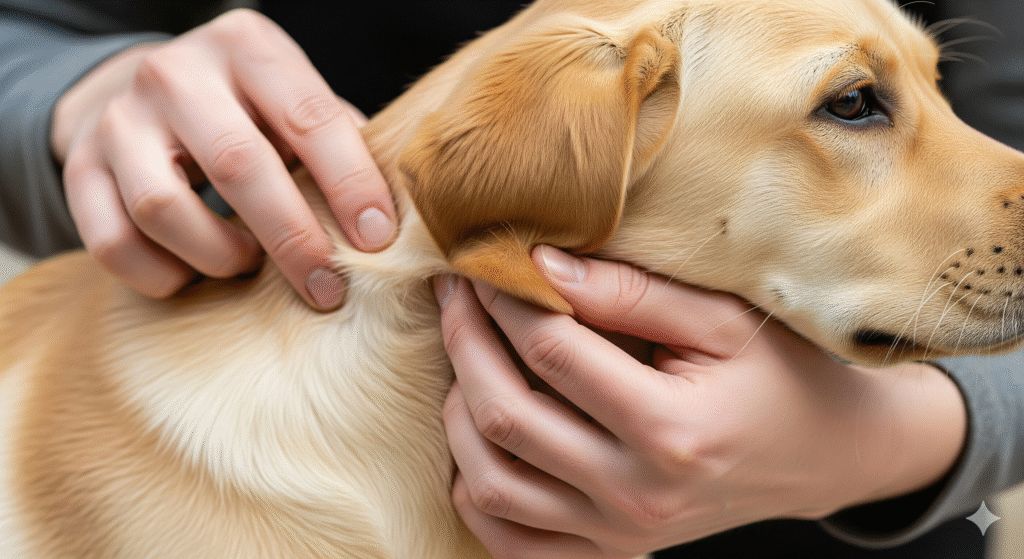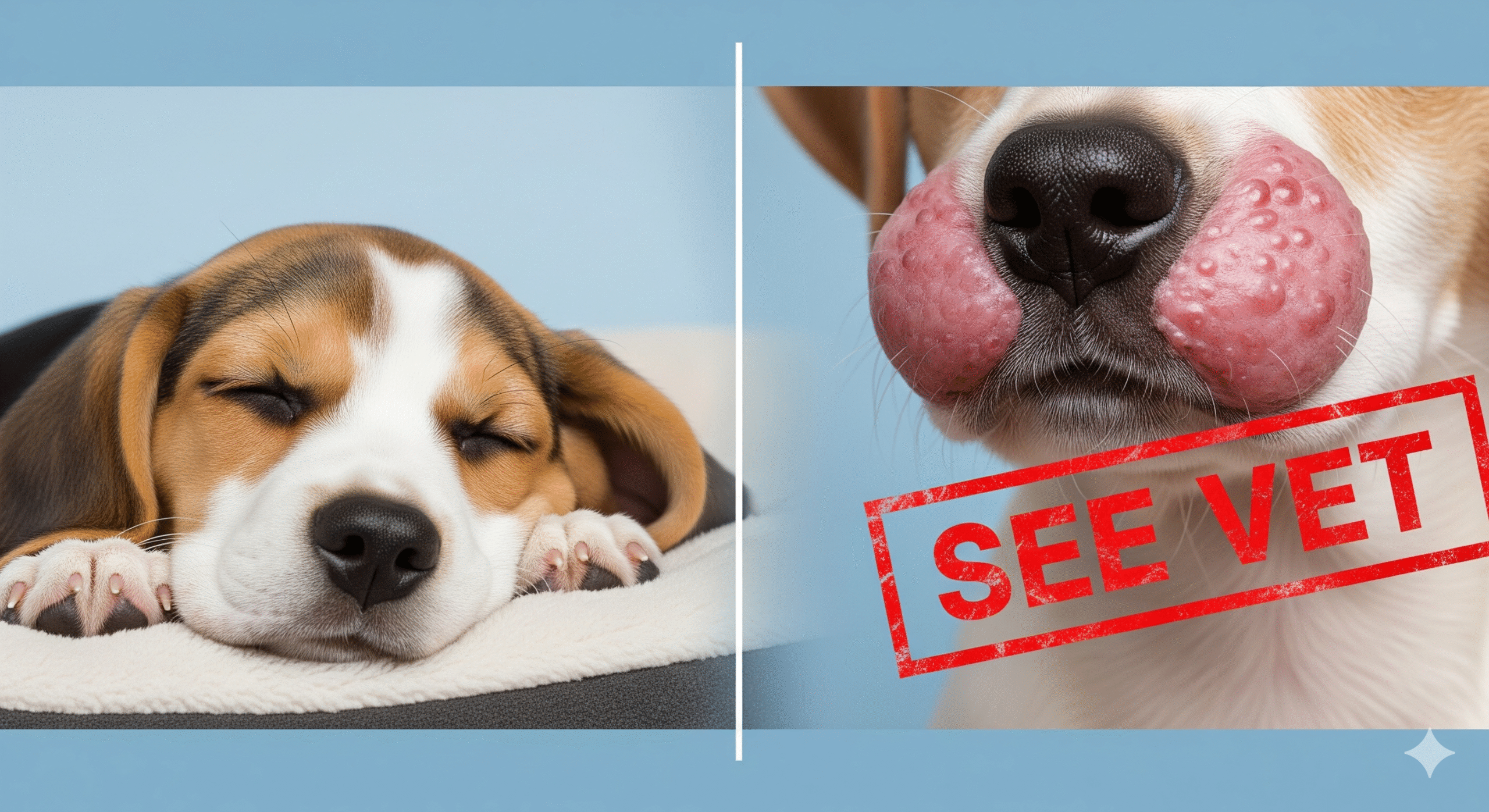Getting your puppy vaccinated is one of the most responsible and loving actions you can take as a pet owner. These vaccines protect them from devastating, often fatal, diseases like Parvovirus, Distemper, and Rabies. 🛡️ However, like any medical procedure, vaccinations can sometimes cause side effects. While most are mild and short-lived, it’s crucial to know the difference between a normal response and a potential emergency.
This comprehensive guide will walk you through the common puppy vaccine side effects, the rare but serious reactions that require immediate vet attention, and how to provide the best after vaccination care for your furry friend. Being informed will help you navigate your puppy’s vaccination journey with confidence and calm.
Why Vaccinations Are Essential (Despite the Risks) 💉
Before we discuss side effects, it’s important to reaffirm the why. The benefits of vaccinating your puppy overwhelmingly outweigh the risks.
- Disease Prevention: Vaccines train your puppy’s immune system to recognize and fight specific pathogens without them having to suffer through the full-blown disease.
- Herd Immunity: Widespread vaccination protects the entire dog population, especially those who are too young or too immunocompromised to be vaccinated themselves.
- Public Health: Vaccines for diseases like Rabies are crucial for human safety as well.
- Long-Term Savings: Preventing a severe illness is far less expensive than treating one.
Think of it this way: the risk of a serious reaction is extremely low, while the risk of encountering a deadly disease without protection is significantly higher.
Common, Mild Puppy Vaccine Side Effects 😴
Most puppies experience little to no side effects. When they do, they are typically mild and resolve on their own within 24 to 48 hours. These are normal signs that your puppy’s immune system is doing its job and creating the necessary antibodies.
Here’s what to expect:
- Lethargy & Sleepiness: Your puppy may be less energetic than usual, sleeping more and playing less. This is the most common reaction.
- Mild Discomfort at the Injection Site: The spot where the shot was given might be slightly sore or tender. Your puppy might flinch or yelp if you touch it.
- A Temporary Lump or Swelling: A small, firm bump under the skin at the injection site can form. This is usually just a local inflammation and should go down on its own within a few weeks. Monitor it to ensure it doesn’t grow.
- Low-Grade Fever: A slight fever is a sign the body is mounting an immune response.
- Reduced Appetite: Your pup might not be as interested in their food for a day. Ensure they have access to fresh water.
Expert Insight: “A mild reaction is not a sign that the vaccine ‘didn’t work’ or that something is wrong. It’s actually a positive indicator that the immune system is being stimulated. It’s working exactly as it should.” – Dr. Emily Thompson, DVM.
How to Provide Comfort and After Vaccination Care at Home 🏡
If your puppy is experiencing mild side effects, a little extra TLC is all they need.
- Let Them Rest: Don’t force exercise or play. Encourage calm, quiet activities and plenty of sleep.
- Provide Easy Access to Water: Hydration is key, especially if they have a slight fever.
- Offer a Bland Diet: If their stomach is upset, offer a small meal of plain, boiled chicken and rice.
- Avoid Touching the Sore Spot: Be gentle when handling your puppy to avoid causing them pain at the injection site.
- Use a Warm Compress: If there’s a small lump, a warm compress applied gently for 5-10 minutes a few times a day can help soothe and disperse it.
Less Common, More Serious Side Effects 🚨
Some reactions, while still uncommon, are more severe and require a call to your veterinarian. These are not considered normal and should be monitored closely.
- Persistent Vomiting or Diarrhea: More than one or two episodes is a cause for concern and can lead to dehydration.
- Hives, Facial Swelling, or Severe Itching: This is a sign of an allergic reaction. You may see bumps all over their body, swelling around the eyes and muzzle, or notice them scratching incessantly.
- Persistent Cough or Difficulty Breathing: This can be a sign of a reaction to intranasal vaccines (like Bordetella) or a more systemic allergic response.
- Severe Lethargy or Collapse: If your puppy is completely unresponsive, weak, or unable to stand, this is a major red flag.
Rare But Dangerous: Anaphylactic Shock 🚑
This is a severe, life-threatening allergic reaction that occurs almost immediately after vaccination, often within minutes. It is a true veterinary emergency.
Signs of Anaphylaxis include:
- Sudden onset of vomiting or diarrhea
- Pale gums
- Difficulty breathing (rapid breaths, wheezing)
- Rapid heart rate
- Cold extremities
- Collapse and loss of consciousness
What to Do: This requires immediate emergency veterinary care. Do not wait. This reaction is extremely rare, but knowing the signs could save your puppy’s life.
The Timeline of Puppy Vaccine Side Effects ⏰
Understanding when reactions can occur helps you know what to watch for and when.
- Immediate (Within minutes to an hour): Anaphylactic shock. This is why many vets ask you to wait in the clinic for 15-20 minutes after administration.
- First 24-48 Hours: The most common window for mild side effects like lethargy, soreness, and low-grade fever.
- Days to Weeks After: The appearance of a small, firm lump at the injection site. This should slowly shrink. If it persists for over three months or grows larger, consult your vet.
- 3-45 Days After (Extremely Rare): Certain vaccines, like the Rabies vaccine, have been linked to a rare immune-mediated reaction that can affect the nervous system.
Should You Ever Skip or Delay Vaccines? 🤔
For the vast majority of puppies, the standard vaccination schedule is the safest path. However, discuss your puppy’s specific health with your vet. They may recommend a tailored approach if your puppy:
- Has had a previous bad reaction to vaccines.
- Is currently sick or immunocompromised.
- Is on certain medications.
Your veterinarian is your best partner in making these decisions. Never skip vaccines out of fear without having a detailed conversation with them first.
Your Post-Vaccination Action Plan: A Checklist ✅
- At the Vet: Wait in the clinic for 15-20 minutes after the shot to monitor for immediate anaphylactic reactions.
- At Home: For the first 48 hours, provide a calm environment and monitor your puppy closely.
- Monitor: Use the lists above to differentiate between mild and severe symptoms.
- Comfort: Provide rest, water, and a gentle diet.
- Act: Know your nearest emergency vet clinic’s phone number and address, just in case.
Final Thoughts: Knowledge is Power 💪
Witnessing any side effect in your puppy can be scary, but remember that the vast majority are mild and transient. Your vigilance is a key part of being a great pet parent. By knowing what to expect and when to seek help, you ensure that your puppy gets the life-saving protection they need with the utmost safety.
Has your puppy ever experienced a reaction to their vaccines? Sharing your story can help other pet parents feel less alone. Tell us about your experience and how you handled it in the comments below. 👇

…By following these steps, you’ll teach your puppy to love their crate, seeing it as a safe den rather than a punishment. This positive association makes the crate one of the most effective tools for a variety of training goals, especially housebreaking. To see how the crate fits into a larger strategy, read our guide on How to Potty Train a Puppy in 7 Days (Vet-Approved).






